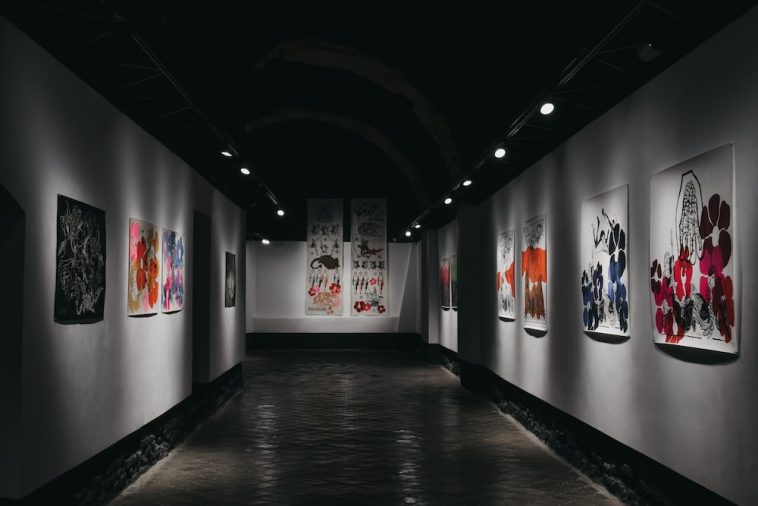Introduction.
Opening an art gallery in Nigeria is not just about hanging paintings on walls and hoping people will walk in.
It’s about creating a space that celebrates creativity, culture, and the unique perspectives of Nigerian artists.
With the growing art scene in the country, especially in cities like Lagos, Abuja, and Port Harcourt, there’s a lot of opportunity to create something special.
But starting an art gallery can feel overwhelming, especially if you’re not sure where to begin. From finding the perfect location to curating your first exhibition, there’s a lot to consider.
This guide is here to break everything down for you, step by step. I’ll walk you through the essentials of setting up an art gallery in Nigeria, from the basics to some insider tips.
So, if you’ve ever thought about opening a gallery but weren’t sure where to start, this article is for you!
How Do I Setup an Art Gallery In Nigeria?
1. Why Start an Art Gallery in Nigeria?
The Nigerian art market has been steadily growing over the years. According to reports, the country’s art industry has seen a massive rise in interest, with Nigerian art fetching high prices at international auctions.
For example, in 2022, Nigerian artists like Ben Enwonwu and Njideka Akunyili Crosby made waves at global auctions, making Nigeria one of the most talked-about art markets in Africa.
Nigerians are proud of their rich cultural heritage, and this love for art is reflected in both the local and international art scenes.
Opening an art gallery in Nigeria isn’t just a business venture; it’s a chance to contribute to the growing art culture and support local artists who might not otherwise have a platform.
Plus, the Nigerian youth are more interested than ever in exploring art, which gives you an eager audience right off the bat.
2. Getting Started: Do Your Research.
Before you start diving into all the fun parts of gallery ownership, there’s some groundwork to do. Researching your target market, understanding what kind of art people are buying, and knowing your competitors is crucial.
In Nigeria, cities like Lagos and Abuja are known for their vibrant art scenes, but they’re also home to many established galleries.
Take the time to visit existing galleries, talk to other gallery owners, and even visit local art fairs to get a feel of what’s out there. Pay attention to the types of art that are popular and what gaps might exist in the market.
For instance, while traditional Nigerian art (like paintings and sculptures) is always in demand, contemporary art is also gaining momentum.
What kind of gallery do you want to run—do you want to focus on contemporary, traditional, or maybe a mix of both?
3. Finding the Perfect Location
Location is everything. In Nigeria, art galleries are often found in high-traffic, cultural hubs like Victoria Island in Lagos, Maitama in Abuja, or the city center in Port Harcourt.
But finding the right location goes beyond just being in the “right” area. You’ll need to think about accessibility for your visitors, the size of the space, and whether it fits your brand.
Renting a space in a cultural hotspot can be costly, so it’s important to balance your vision with your budget.
Smaller towns and communities are also showing a growing interest in art, which might make them an untapped market for your gallery. Consider these places as potential locations, especially if you’re looking to create something unique.
4. Design and Setup: Make It Inviting.
Once you’ve secured your location, it’s time to focus on design. The layout of your gallery will affect how people experience the art and ultimately how they buy it. Your space should feel open and inviting, with good lighting that highlights the artwork.
Lighting is crucial—too bright or too dim, and your art won’t look as appealing. Invest in quality track lighting or gallery-style fixtures that can be adjusted to focus on individual pieces.
The overall vibe of your gallery should align with the type of art you plan to display. For example, if you’re focusing on contemporary art, you might want to have a sleek, modern feel with minimalist décor.
If your focus is on traditional art, the design could incorporate more African-inspired elements that connect with the cultural themes of the artwork.
5. Building Relationships with Artists.
One of the most important parts of running an art gallery is building strong relationships with artists. Without them, there’s no gallery!
To stand out, you’ll need to support and nurture relationships with local Nigerian artists. Attend art shows, visit artist studios, and network with emerging talents to find the right pieces for your gallery.
You don’t have to exclusively feature established artists. Many galleries thrive by offering a platform for emerging talent, giving new artists the exposure they need.
The key is to have a diverse collection that resonates with your target audience and the story you want to tell through your gallery.
6. Curating Your First Exhibition.
Now that you’ve got a location and a collection of artwork, it’s time to put everything together and curate your first exhibition.
This can be a huge milestone for your gallery, so it’s important to plan it well. Choose a theme that will tie the art pieces together and give your exhibition focus.
The theme could be anything from “Nigerian Heritage” to “Modern Expressions,” but it should speak to the type of audience you’re targeting.
Be sure to promote the exhibition widely. Use social media platforms like Instagram, Facebook, and Twitter to create buzz and invite potential visitors. If possible, partner with influencers or well-known figures in the Nigerian art world to boost attendance.
7. Pricing Your Art
Setting the right price for art can be tricky, but it’s one of the most important aspects of running a successful gallery. Prices need to reflect the value of the work while also being accessible to your target market.
For emerging artists, it’s important to consider their experience and reputation when determining prices. Established artists might have higher prices due to their recognition in the market.
Keep in mind the price of other galleries in your area and how much buyers are willing to pay. It’s also important to consider the artist’s input and collaborate on setting fair prices that benefit both parties.
8. Legal and Financial Considerations.
Before you open your doors, make sure you’ve sorted out the legal side of things. Register your gallery as a business with the Corporate Affairs Commission (CAC) in Nigeria, and get the necessary licenses. Depending on your location, you might also need a permit to operate a gallery space.
Additionally, make sure your financials are in order. It’s important to keep track of all your expenses, from rent to artist fees to marketing costs.
You might also want to consult with a financial advisor to ensure that your gallery is financially sustainable in the long term.
9. Marketing and Promoting Your Gallery
Marketing is key to bringing people into your gallery. Word of mouth can be powerful, but you’ll also need to actively promote your gallery.
Online platforms like Instagram and Facebook are great tools for showcasing your gallery and the art you feature. Host opening events, invite local press, and collaborate with influencers in the Nigerian art scene.
You can also offer online sales or virtual tours for people who might not be able to visit in person. Art lovers who are unable to attend your physical gallery might still be interested in buying online, so this is something to consider as your gallery grows.
Frequently Asked Questions
1. How much does it cost to open an art gallery in Nigeria?
cost of opening an art gallery in Nigeria varies based on location, size, and the type of gallery you want to open. In cities like Lagos, rent for a small gallery space can range from ₦500,000 to ₦2,000,000 per year, excluding setup and operational costs.
2. Do I need a lot of experience in art to open a gallery?
Not necessarily. While having a background in art can be helpful, what matters most is your passion for supporting artists and your ability to run a business. Many successful gallery owners start without formal art training, focusing instead on building relationships with artists and learning the market.
3. How can I make my gallery stand out?
Focus on offering unique experiences to your visitors. Hosting themed exhibitions, supporting emerging artists, and creating an interactive space will help differentiate your gallery. Also, don’t forget about the power of social media—an active online presence can significantly boost your visibility.
Conclusion.
Nigeria’s art scene is more vibrant than ever, and there’s never been a better time to start your own gallery.
From the growing demand for Nigerian art to the support for local artists, the opportunities are endless.
But it’s not an easy journey. With the right research, planning, and dedication, your gallery can thrive and contribute to the cultural landscape of Nigeria.
So, the real question is: Are you ready to take the plunge and become a part of Nigeria’s exciting art world?





GIPHY App Key not set. Please check settings